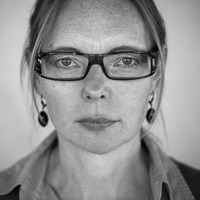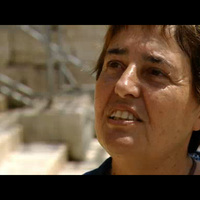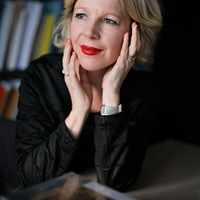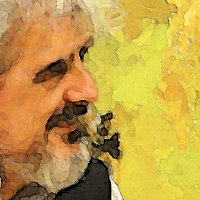
Philine Helas
Related Authors
Alejandra B B Osorio
Wellesley College
Florin Curta
University of Florida
Olga Palagia
National & Kapodistrian University of Athens
Andreas Rhoby
Austrian Academy of Sciences
Fabien Montcher
Saint Louis University
Christoph Uehlinger
University of Zurich, Switzerland
jelena bogdanovic
Vanderbilt University
Klaniczay Gabor
Central European University
Barbara Baert
KU Leuven
Tomás Mantecón
Universidad de Cantabria










Uploads
Papers by Philine Helas
At the above-mentioned event in Naples, Florentine merchants presented
a statue of the emperor Caesar standing on a sphere painted to represent the earth, which was constantly revolving. It is my hypothesis that this globe was a product of the „scientific revolution" which began in early 15-th Century Florence and was further proliferated by the Union Council in 1439 where Greek and Latin scholars met. Written sources make no mention of the creator of the 1443 globe. We can, however, reconstruct a highly suggestive connection: Piero de' Ricci was the author of a poem recited by Caesar; de' Ricci was acquainted with Paolo dal Pozzo Toscanelli, the great Florentine cartographer who, in turn, was a friend of Filippo Brunelleschi, the well-known architect, engineer and constructor of machines for the religious spectacles in Florence. Together this is a rare combination of humanistic, artistic and scientific knowledge which could have formed the basis for this invention. It should also be noted that ephemeral decorations formed a special place for artistic experiments.
In Florence, the first picture of a globe can be found in the 1470's in a painting by Piero Poliamolo. Many other examples can subsequently be found in miniatures. Perhaps influenced by Florentine inventions, Federico da Montefeltro made his court a center of humanistic and scientific studies, generating another ephemeral globe in 1475. Only two years later, the first „real" globe is documented in Italy. It was made for Sixtus IV by the German astronomer Donnus Nikolaus Germanus.
It appears that an artistic readiness to use and transform knowledge of
geometry and optics formed the basis of an interest in „imaging" the earth. This was later to become an important part of the history of science.
At the above-mentioned event in Naples, Florentine merchants presented
a statue of the emperor Caesar standing on a sphere painted to represent the earth, which was constantly revolving. It is my hypothesis that this globe was a product of the „scientific revolution" which began in early 15-th Century Florence and was further proliferated by the Union Council in 1439 where Greek and Latin scholars met. Written sources make no mention of the creator of the 1443 globe. We can, however, reconstruct a highly suggestive connection: Piero de' Ricci was the author of a poem recited by Caesar; de' Ricci was acquainted with Paolo dal Pozzo Toscanelli, the great Florentine cartographer who, in turn, was a friend of Filippo Brunelleschi, the well-known architect, engineer and constructor of machines for the religious spectacles in Florence. Together this is a rare combination of humanistic, artistic and scientific knowledge which could have formed the basis for this invention. It should also be noted that ephemeral decorations formed a special place for artistic experiments.
In Florence, the first picture of a globe can be found in the 1470's in a painting by Piero Poliamolo. Many other examples can subsequently be found in miniatures. Perhaps influenced by Florentine inventions, Federico da Montefeltro made his court a center of humanistic and scientific studies, generating another ephemeral globe in 1475. Only two years later, the first „real" globe is documented in Italy. It was made for Sixtus IV by the German astronomer Donnus Nikolaus Germanus.
It appears that an artistic readiness to use and transform knowledge of
geometry and optics formed the basis of an interest in „imaging" the earth. This was later to become an important part of the history of science.
Since 2015, the traditional sections of the collection have grown in line with a programme of systematic acquisitions, in response also to the Institute’s new directions of research. For example, in agreement with the research department headed by Tanja Michalsky, there has been a focus on antique publications devoted to topics such as Naples and southern Italy, while also opening up the field to ‘natural disasters’ such as earthquakes, floods and volcanic eruptions. Vesuvius constitutes, so to speak, the point of intersection between these interests. This led to the idea of presenting part of the book holdings already present in the ‘rare’ collection, together with numerous more recent acquisitions, through a digital exhibition – ‘Eruzioni di carta’ (‘Paper eruptions’) – for which this material was selected, studied and catalogued by a study group set up for the occasion.
The entire library holdings are currently being digitised in line with the highest technical standards, and are being made available to the public in open source mode. The digitised volumes of this exhibition can be consulted in the DLIB digital library, where they form a special collection (links can be found in the respective files). All texts are undergoing neural transcription with the help of Transkribus, providing additional research tools for those who want to try their hand at this material in the future.
The result of close cooperation between the Library department and the Michalsky research department with the technical support of the Photographic Collection, this digital exhibition has been personally curated by Elisabetta Scirocco, Philine Helas and Hanna Sophie Stegemann, building on the work carried out over the years by librarians Beate Thomas and Barbara Dinsing. The study and cataloguing of the works in the exhibition have been enriched by the contribution of the research group of the ERC project Disasters, Communication and Politics in Southwestern Europe: The Making of Emergency Response Policies in the Early Modern Age (DisComPoSE), directed by Domenico Cecere at the Department of Humanistic Studies of the University of Naples “Federico II”, and dedicated to the links between the circulation of news about natural disasters, the processing of information and memories of the events and the development of emergency management policies in the European and non-European territories of the Hispanic Monarchy between the sixteenth and eighteenth centuries.
While it is true to some extent that “the bibliography of Vesuvius begins with the great eruption of 1631” (Furchheim 1897, Preface, p. V), the volcanic phenomena of Roman Campania Felix continued to attract the interest of travellers and ‘health tourists’ throughout the Middle Ages and the modern age, gaining a prominent place in guidebooks and works aimed at lovers of antiquities who travelled south of Rome. It is no coincidence that these ‘natural monuments’ are included in various picture cycles dedicated to antiquities or the wonders of Italy, alongside architectural monuments built by human hands. However, it is difficult to underestimate the cultural impact of the eruptive event of 1631, which constitutes a real watershed in the history of Naples and its territory and marks the start of the volcano’s continuous activity over the following two centuries. Writers, historians, artists and travellers were continuously interested in the mountain, and during the eighteenth century were joined by naturalists who laid the foundations for the birth of modern geology and volcanology. In the nineteenth century, the latter was to establish itself as a discipline on an international scale, placing the volcanoes of Campania and those of the rest of the world on a similar level of investigation. Visiting Vesuvius and/or the Solfatara as a natural spectacle and historical site of tragic events was throughout the late modern age an integral part of the tour programme of travellers and subsequently of travelogues, while the numerous gouaches depicting Vesuvius during an eruption indicate a flourishing market for such souvenirs.
The six sections of the exhibition retrace this important thematic trail in European publishing and visual culture from the sixteenth to the nineteenth century. The enormous production of texts with accounts, chronological series and catalogues of eruptions, theological discourses, mineralogical and volcanological investigations, printed by Neapolitan publishers and others, was accompanied from the outset by an equally flourishing production of images, linked closely intrinsically and extrinsically with the source texts. The diffusion and transmigration of visual topoi and codes of representation linked to ‘volcanic landscapes’ and catastrophes is in fact another possible key to understanding the volumes on display.
Some of the volumes on display entered the Institute’s collection very early on; others belonged to internationally renowned scholars who have long animated the intellectual life of the Institute, such as Richard Krautheimer. The success of the theme and the rich production of books and pictures on the subject of the eruptions of Vesuvius have recently been matched by the interest of the underground market and unscrupulous collectors. Proof of this is the systematic defacement of many of the volumes on display, with engravings depicting the volcano (represented as a force of nature in activity or as a landscape element) being cut out from them, often in a targeted and selective manner. In these cases, wherever possible, the exhibition cards refer to these missing engravings found in other examples available on the web, to allow a virtual recomposition of the works in their relationship between texts and images, albeit with the awareness of the impossibility of recovering the uniqueness of the book-object that characterised every single example of the same print run. For this reason, the work of scientific analysis for the exhibition was accompanied by the updating of the files concerning these same volumes in the library catalogue.
‘Eruzioni di carta’ is only the first exhibition of its kind. Other exhibitions will follow at regular intervals, with the aim always of combining the library’s scientific and research expertise and presenting some of the treasures of the Institute’s book heritage to the specialist public.